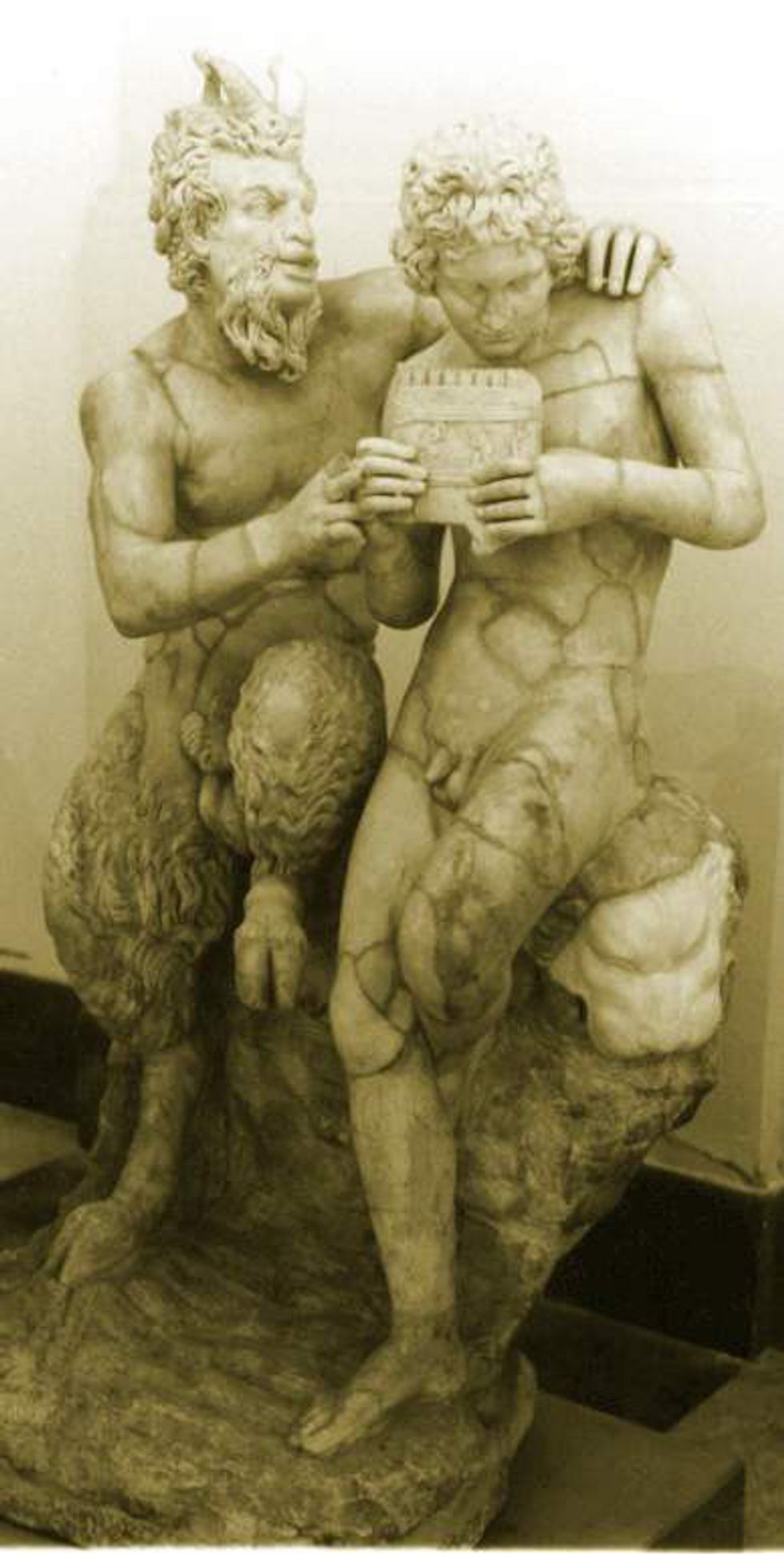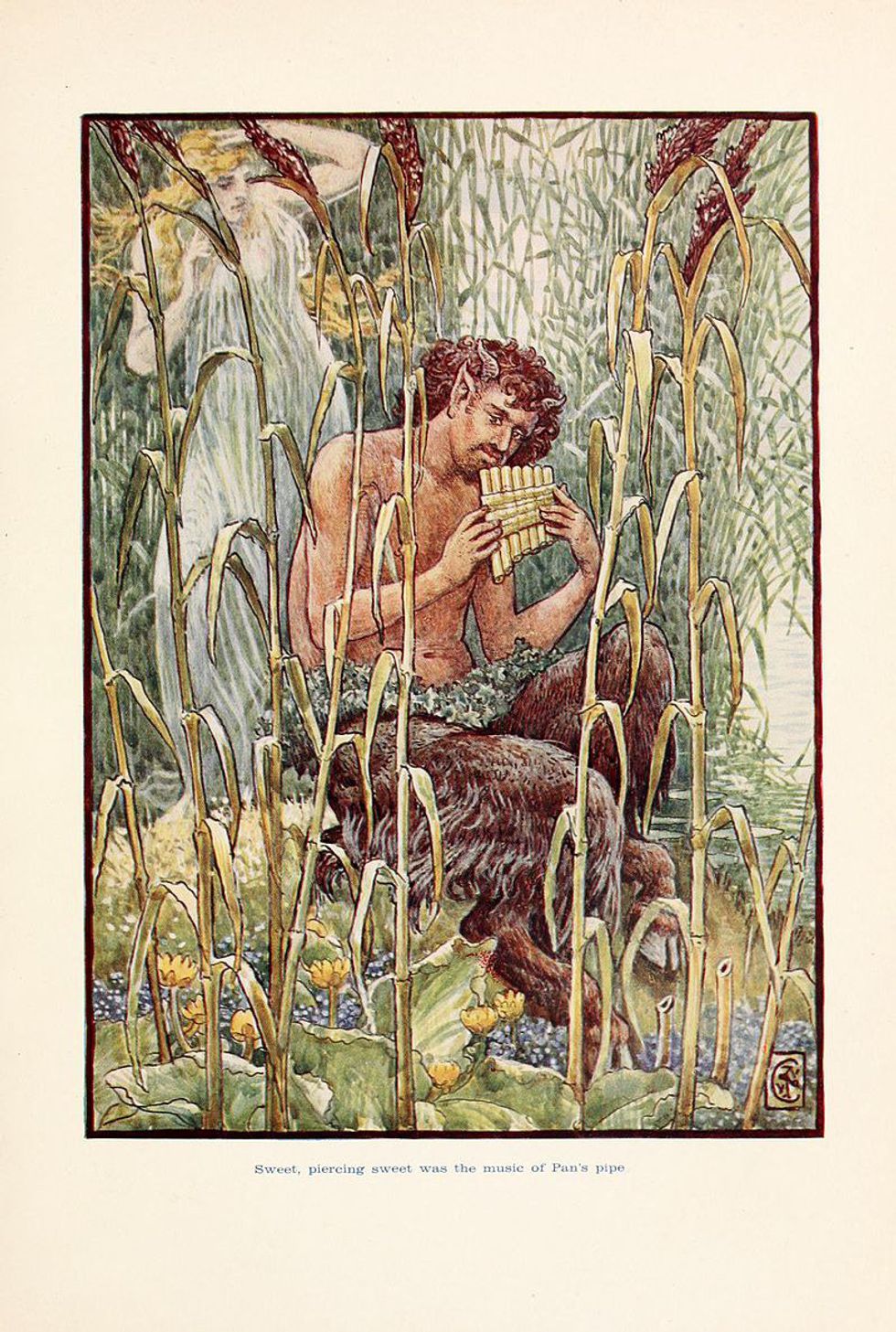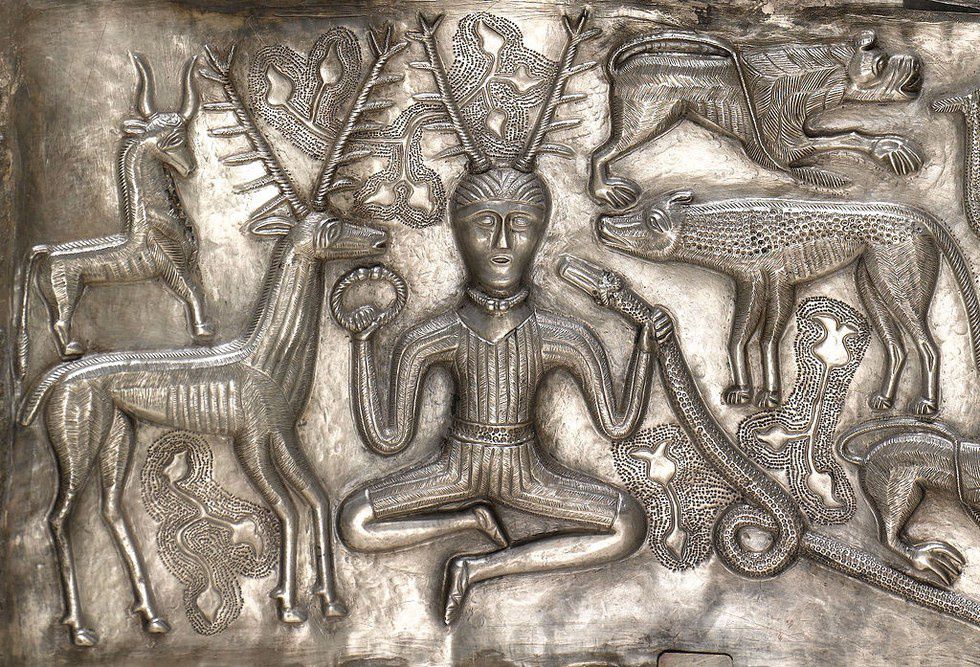The visual arts possess a unique and impactful versatility that is unlike any other aspect of humanity. Visual expression allows one to express self-identity, cultural significances, and historical references, just to name a few of art’s possibilities. Visual art also has the ability to provoke questions. Figures of divinity, which has been represented quite frequently in art, are also subjected to a great deal of debate. From the skin tone of Jesus to the depictions of God as an elderly white male versus Arabic script, figures of divinity are subjected to a great deal of questions that are often brought on due to personal bias. I am not unlike anyone else who has found themselves questioning the depictions of these divine figures in art.
Pagan iconography was commonly appropriated for representation during the early days of Christianity, which has been a primary source of my own questioning. This is especially the case when considering the rustic god of the wild, Pan, who is a divine figure of ancient Greece and an icon of Paganism that was appropriated to represent the Christian figure known as Satan. Whenever faced with the iconography of either Pan or Satan, I have asked myself what factored into Christianity choosing Pan to represent this epitome of evil?
Pan was a rustic god within ancient Greek culture who represented nature, fertility, and lust. Pan is depicted as a youthful male, with horns and legs of a ram or goat, who is often seen playing a musical instrument while dancing. To word it loosely, Pan was one of the first 'party animals.' The horns and lustful nature of Pan would make him an obvious choice for Christianity’s Satan, especially taking Christianity's conservative outlook into consideration. However, when you take a closer look at the context of Pan there are some interesting facets to the god of the wild that need to be considered.
Let us first consider the horns shall we? Within Pagan culture, horns have a rather strong tendency to represent a position of leadership, primarily within nature. For example, Cernunnos is a god of the wild from ancient Celtic cultures of Europe who was also depicted with horns. The horns of Cernunnos were from a stag, which was the animal that symbolized the ruler of the wild. Deities within Celtic Pagan cultures were typically assigned an animal symbol due to the popular belief that these deities observed human behavior through an animal disguise. The antlers of Cernunnos were a symbol of the god’s prestige within the culture. The same thought process applies to Pan, who is depicted with horns and an animal symbol. Pan was also viewed as having dominion over nature and was respected because of that standing within the Pagan culture of ancient Greece.
Pan’s symbolism also shares a commonality with Christianity’s Jesus, which is that both were considered shepherds. Jesus is referred to as the shepherd, or leader, of his flock; a term used for his followers. Pan’s title of shepherd derives from his ability to charm nymphs of Pagan culture in ancient Greece, who were spirits of nature. Pan also cared for creatures of the wild, much like Jesus cared for members of his flock.
The only reasons that I can come up with as to why Pan was chosen to be demonized by Christianity is the favor granted to this deity of a prominent religious ideology that was deemed subordinate to the rising popularity of Christianity during its early days. I bring up this example of Pan and these questions that spring forth from the appropriation of his image because this is only one of many examples where an organized religious group has gone against its core values of kindness and acceptance to villainize an existing culture that was perceived as subordinate due to their own ambitious desires. The ancient cultures of the Mediterranean and Celtic regions are not alone in this experience; cultures native to the American regions, African regions, and Eastern Europe regions were also victims to Christianity’s demonization of previous standing cultures. These questions that were prompted from my own personal research into these experiences listed have provided me the freedom to identify the core positive values of my Catholic upbringing and those of the cultures from my diverse familial background to formulate a personal spiritual ideology. This has freed me from the judgments and confines of the political nature that tarnishes organized religion along with the freedom to experience beautiful facets of these unique cultures that once were lost. I attribute the visual representation of art that has helped me discern truth from organized religious propaganda. This personal truth has allowed me to formulate a strong and diverse spirituality of which I am proud.
In absolute conclusion, what a person or group of people choose to believe is entirely their own business and not of your concern. Embrace the positive and ignore the negative. I am going to provide a final question for this article that a wise person once asked me in council. Consider the following three types of business, which are the business of the divine, the business of others, and your business. Now, what type of business are you most likely to control?
























